Exploring the Richness of Indonesian Culinary Heritage: A Dive into 10 Authentic Dishes
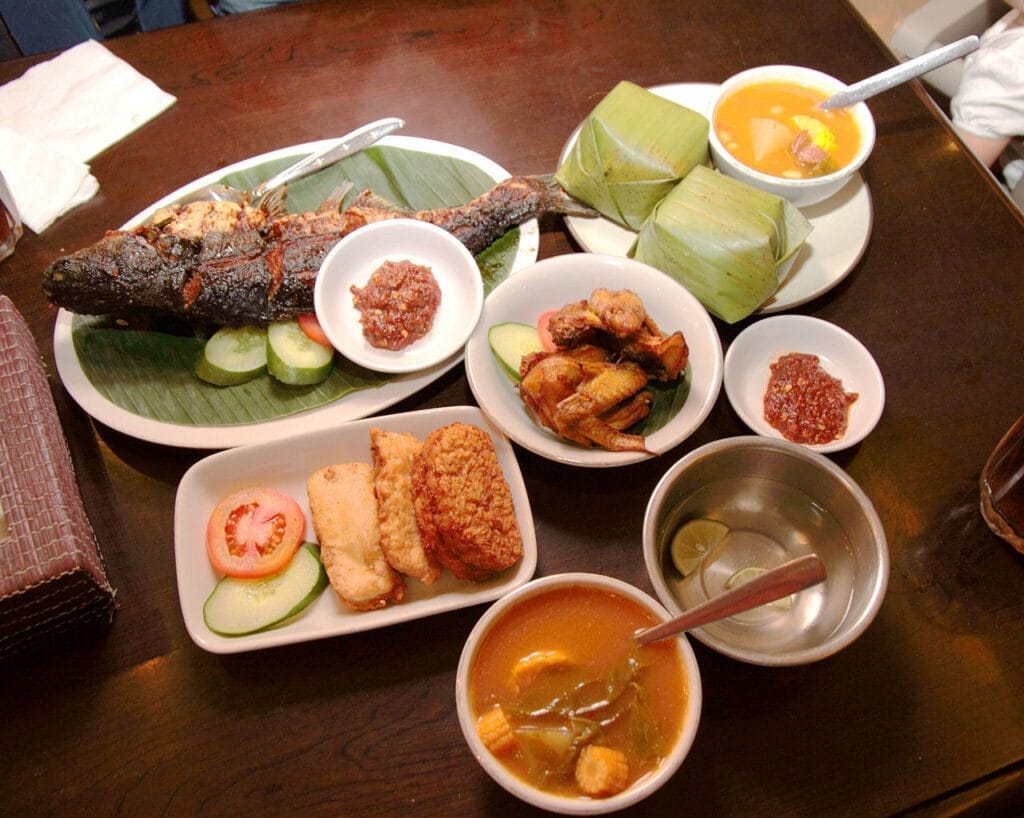
Indonesia Authentic Dishes (Courtesy: Wikipedia)
Introduction:
Indonesia, a nation comprising more than 17,000 islands, boasts a culinary landscape as diverse as its cultural tapestry. The fusion of cultures, traditions, and ingredients has given birth to Indonesian cuisine, a symphony of flavors, spices, and techniques passed down through generations. From fragrant curries to mouthwatering snacks, Indonesian food stands as a testament to the country’s cultural vibrancy. In this article, we will delve into 10 traditional Indonesian dishes that shine a spotlight on the country’s culinary prowess and the regional influences that shape it.
1. Nasi Goreng (Fried Rice):
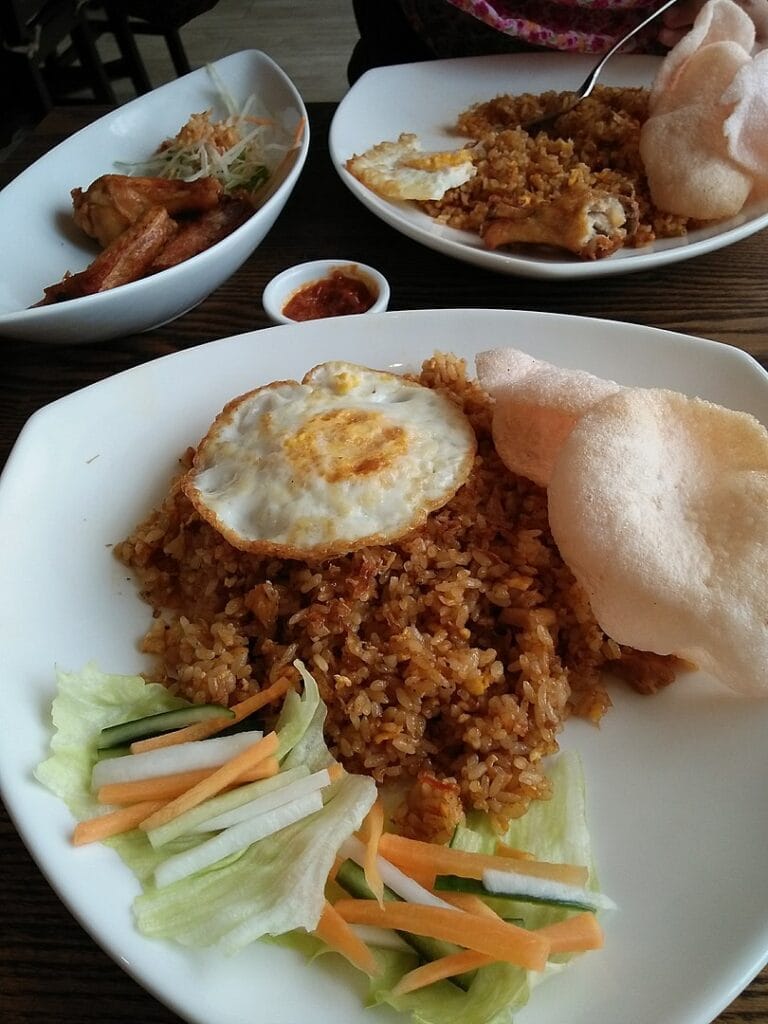
A ubiquitous dish found on Indonesian tables, Nasi Goreng is the epitome of comfort food. Made by stir-frying rice with an array of vegetables, meats (usually chicken, beef, or shrimp), and aromatic spices, this dish is often crowned with a fried egg and accompanied by krupuk (shrimp crackers), resulting in a fulfilling culinary experience.
2. Rendang:
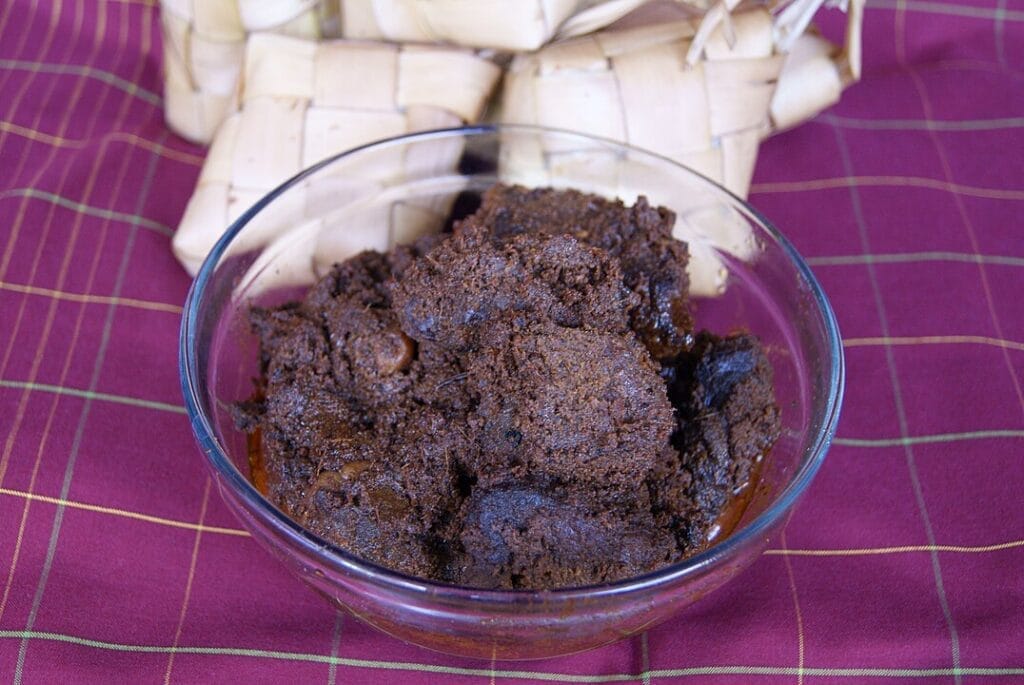
Hailing from West Sumatra, Rendang is a slow-cooked beef curry infused with a blend of spices, including ginger, lemongrass, and turmeric. The outcome is a tender, flavorful dish that has gained international acclaim for its intricate taste profile.
3. Sate (Satay):
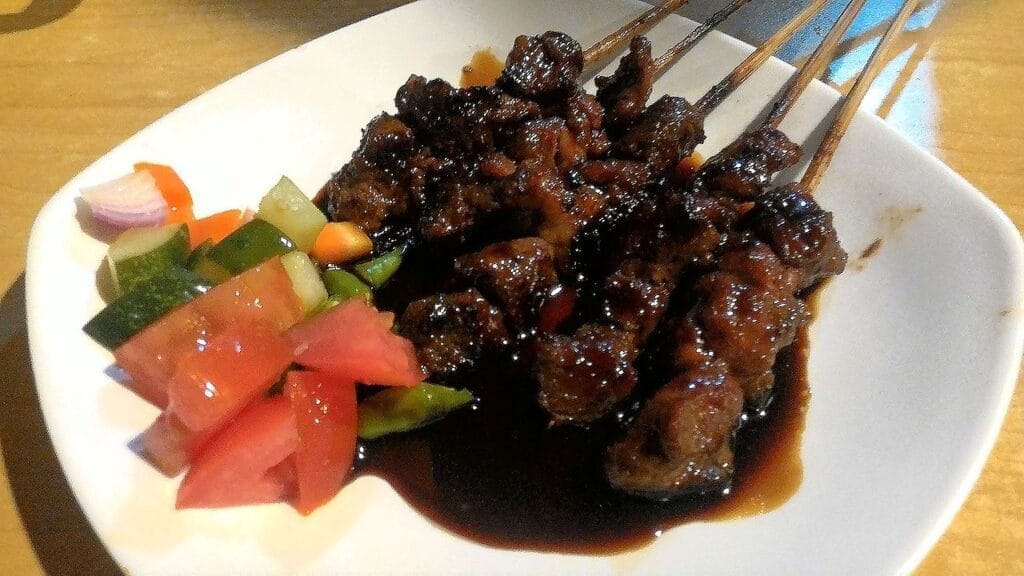
Sate, consisting of skewered and grilled meat, is served with a decadent peanut sauce alongside rice cakes and lontong (compressed rice). Sate is of many varieties which include chicken, beef, lamb, and goat, which makes harmonic blend of flavors and textures.
4. Gado-Gado:
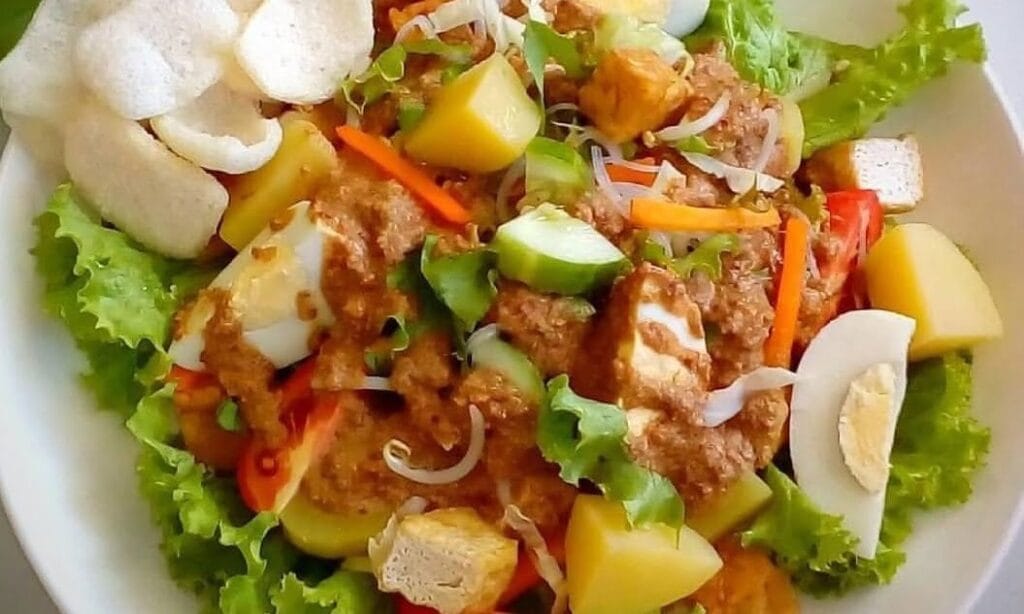
An Gado-Gado is an Indonesian salad, which includes blanched vegetables, tofu, tempeh, and hard-boiled eggs, all drizzled with a rich peanut sauce. The dish’s balance of textures and flavors makes it a favorite among both vegetarians and non-vegetarians.
5. Soto:

Soto is a robust, aromatic soup enjoyed throughout Indonesia, each region offering its unique twist. Typically featuring a clear broth, tender meat (chicken, beef, or offal), and an assortment of spices, Soto is a comforting dish often accompanied by rice or lontong.
6. Bakso:
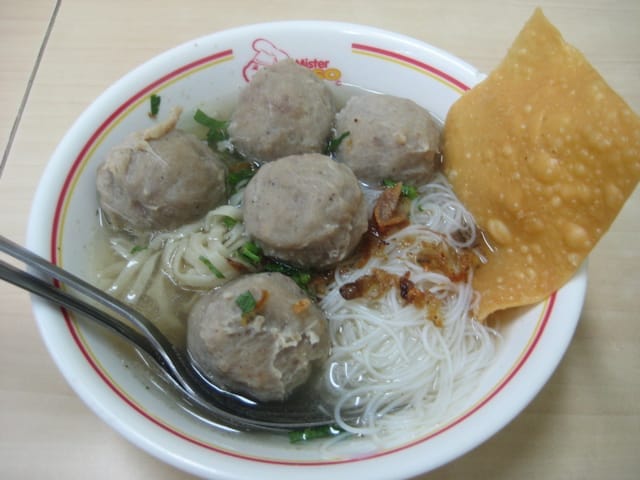
A popular street food, Bakso comprises meatballs made from a combination of beef, chicken, or fish. Served in a flavorful broth with noodles, tofu, and vegetables, Bakso captures the essence of comfort cuisine.
7. Nasi Uduk:
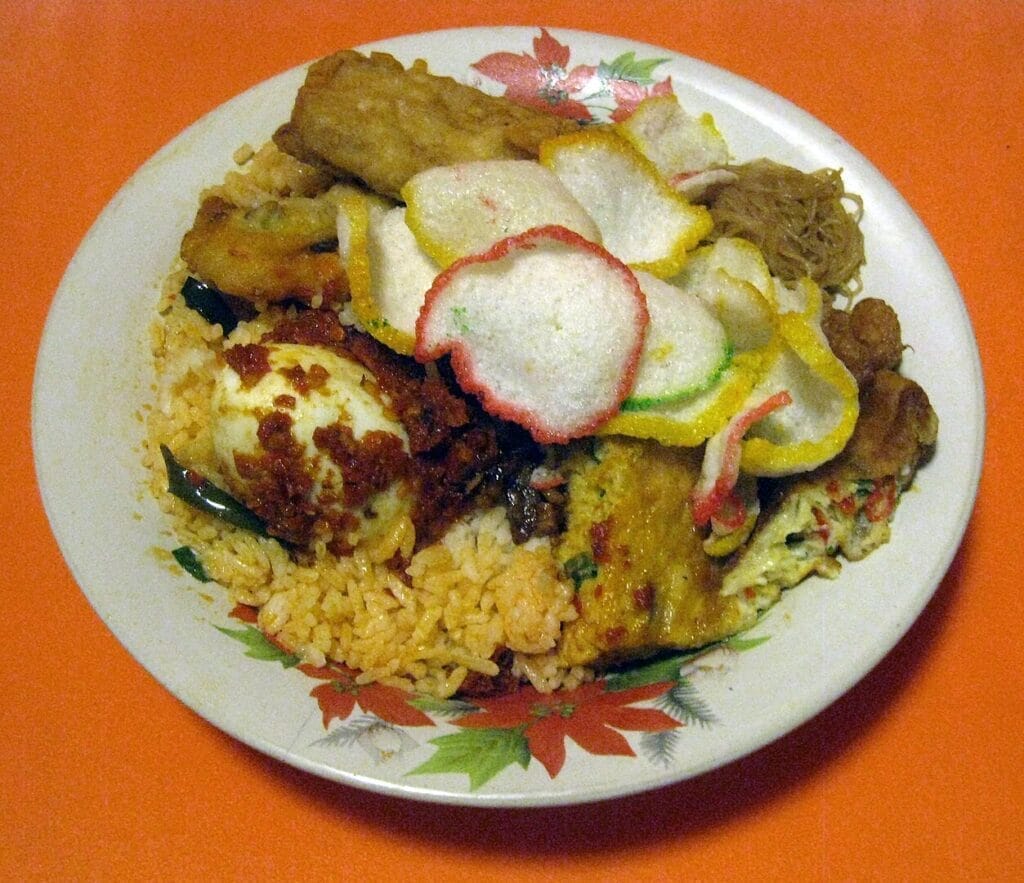
Hailing from Jakarta, Nasi Uduk is fragrant steamed rice cooked with coconut milk and aromatic herbs. Often served with an array of flavorful sides such as fried chicken, tempeh, peanuts, and fried shallots, Nasi Uduk showcases Indonesia’s culinary ingenuity.
8. Pempek:
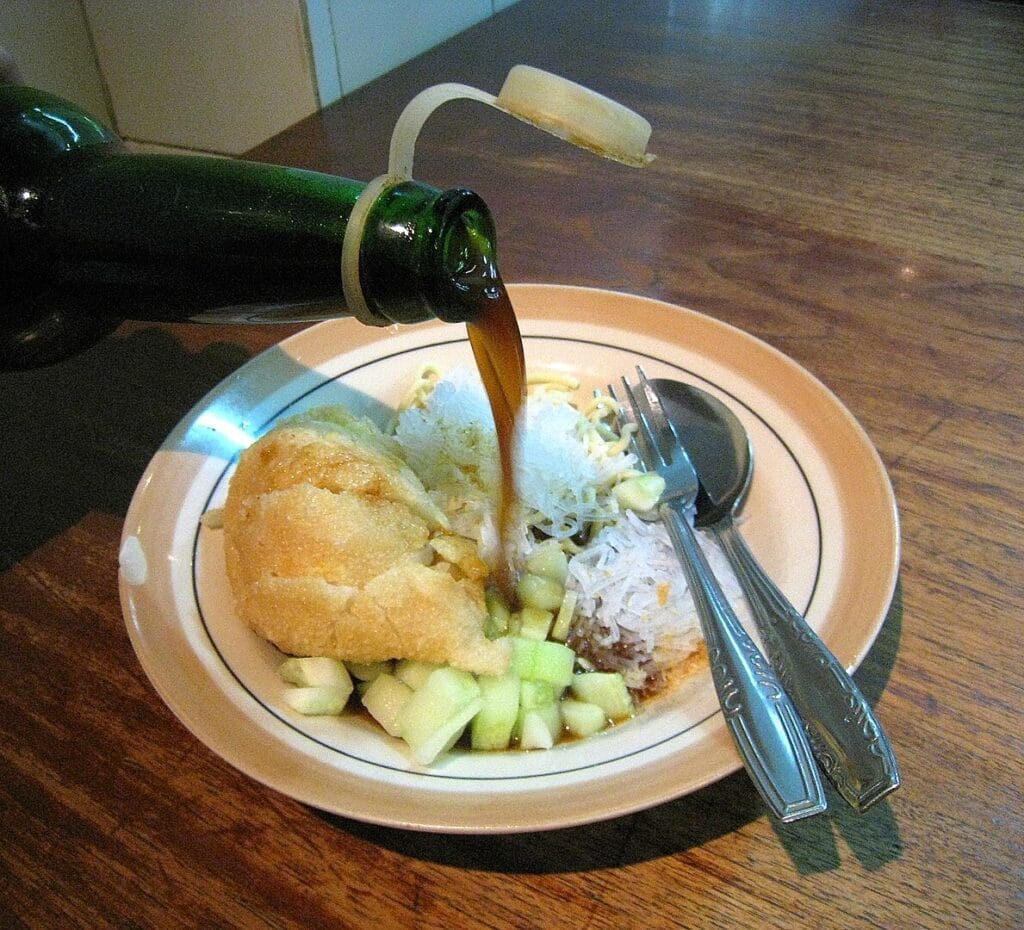
Originating in South Sumatra, Pempek is a unique dish featuring fishcake crafted from fish and tapioca starch. Paired with a sweet and tangy vinegar-based dipping sauce, Pempek highlights the regional diversity of Indonesian cuisine.
9. Rujak:
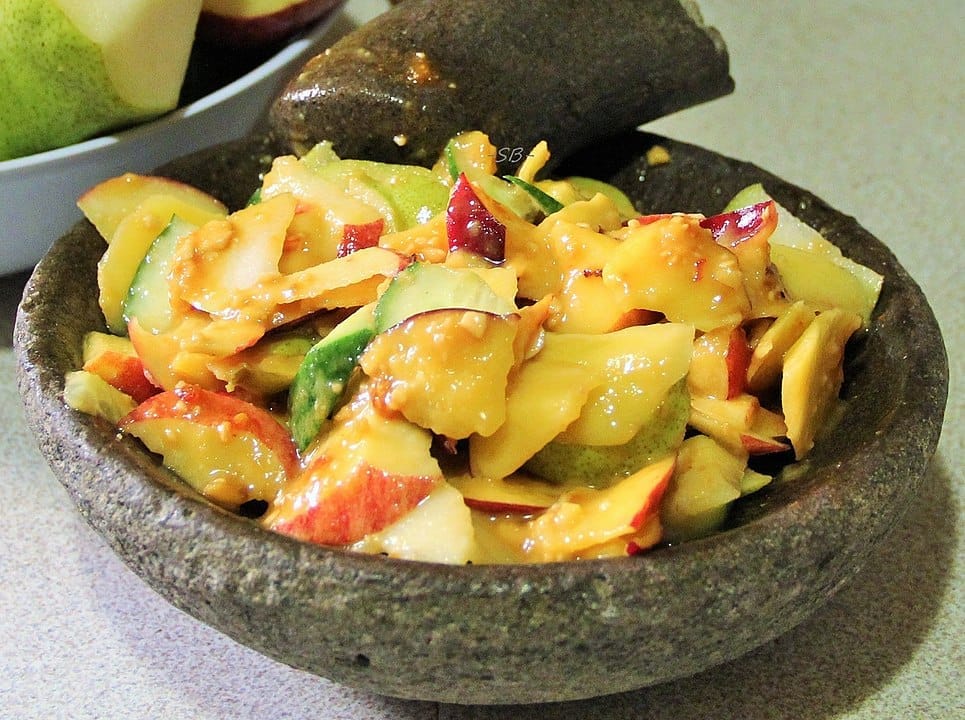
Rujak is a twist on fruit salad, which includes tropical fruits like mango, pineapple, and cucumber with a spicy tamarind or palm sugar dressing. The inter-mix of sweet, sour, and spicy flavors creates a captivating culinary experience.
10. Nasi Kuning:

Nasi Kuning, translating to “Yellow Rice,” is a celebratory dish often colored with turmeric. Served with an array of delectable side dishes including fried chicken, boiled eggs, shredded omelet, and fried anchovies, Nasi Kuning embodies a festive culinary delight.
Conclusion:
Indonesian cuisine is a treasure trove of cultural heritage, with each dish painting a unique picture of tradition and taste. From the beloved Nasi Goreng to the aromatic Rendang and refreshing Gado-Gado, these 10 culinary wonders provide a glimpse into Indonesia’s rich flavors and diverse culinary legacy. Exploring Indonesian cuisine is not only about savoring incredible tastes but also about experiencing the stories and customs that have shaped this flavorful and varied food culture.


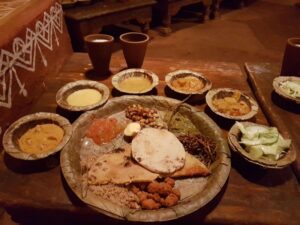





Thanks for sharing. I read many of your blog posts, cool, your blog is very good.
I like how well-written and informative your content is. You have actually given us, your readers, brilliant information and not just filled up your blog with flowery texts like many blogs today do. If you visit my website UQ8 about Airport Transfer, I’m sure you can also find something for yourself.
This is really interesting, You’re a very skilled blogger. I’ve joined your feed and look forward to seeking more of your wonderful post. Also, I have shared your site in my social networks!